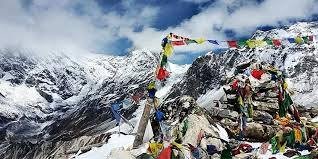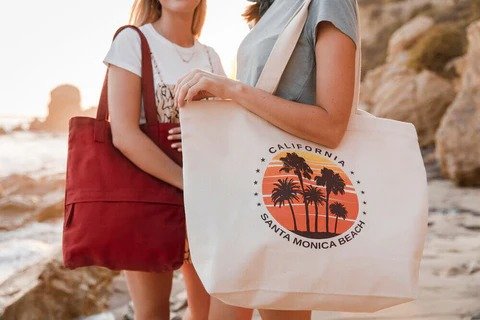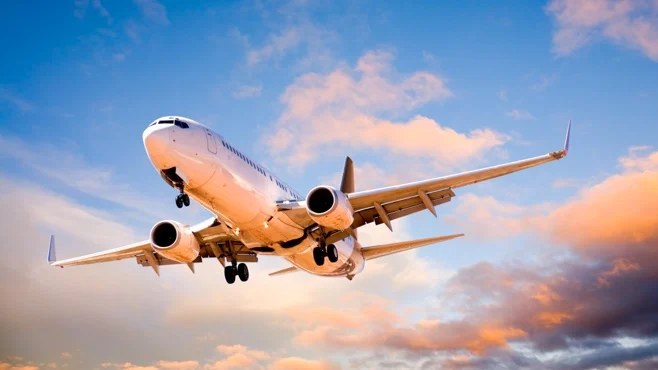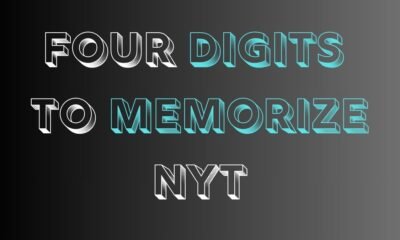Blog
Langtang Trek Cost Details Breakdown

Let’s start with a note that the Langtang Valley trek is the cheapest adventure hike to the mountains of Nepal. In comparison to other popular treks in Nepal such as Everest and Annapurna, Langtang can be Langtang trek price claimed as the cheapest destination ever. For backpackers looking for the cheapest Mountain hike, there can be no better alternative than the Langtang Valley trek.
What is the cost of the Langtang trek?
The cost of a fully inclusive 6-day short trek across the Langtang Valley might approach $550.
For lone travelers, a longer hike lasting roughly eight days can run you about $780.
The eight-day Langtang trek costs about $650 for group tourists.
For roughly $500, independent hikers who do not use a porter can finish the trail.
The Price of Langtang Valley trek can be distributed in these categories.
- ransportation: Private about $300/ local bus around $50
- Porter: $20 per day
- Guide: $25 per day
- Food and drinks: $30 per day
- Accommodation: $10 per day
- Permit: $50 total
- Personal expenses and Tips: Depends on you
- Total= $780 (using the public bus)/ $1030 for using private transportation + Personal expenses and Tips
Transportation Cost for Langtang trek
The thrilling drive from Kathmandu to Syabrubesi marks the start of the Langtang Valley Trekking. About 122 kilometers and 7 hours of travel time separate Syabrubesi from Kathmandu. This distance can be covered in two ways: either by renting a private car or by using a local bus.
Local bus to Syabrubesi
It is not too difficult to take the direct bus from Kathmandu to the Syabrubesi, as you will be changing modes of transportation en route. From 6 am to 10 am every day, the Deluxe bus departs from Kathmandu’s Bus Park and travels to Syabrubesi. From Thamel, it takes around thirty minutes to go to Kathmandu’s central bus park. Less than $10 gets you from Thamel to the bus park in a private taxi.
After leaving Kathmandu, the bus will make one lunch break before arriving in Syabrubesi between five and six o’clock in the evening. Please be aware that you cannot locate Nepalese public buses online because they do not run at the scheduled times. You must seek assistance from a travel agent or your taxi driver. The local buses are frequently crowded, noisy, and unclean. It is therefore advised to use private transportation if you wish to avoid encountering such circumstances.
Private bus to Syabrubesi
You may locate micro/haice that goes straight from their hotel to Syabrubesi, with accommodations for 12 to 13 people. You can get a private taxi for three to four individuals in small parties. The Haice was about $200 and the cab was roughly $120. You may simply hail a cab from your hotel gate because the route from Kathmandu to Syabrubesi is fairly excellent. You may reach Syabrubesi in about six hours if you rent a private vehicle and begin the excursion early. You can also pause wherever you choose to use the restroom and have lunch.
Money-saving advice: It may be less expensive to hire a taxi online through applications or websites. Some helpful apps are Patho, Indrive, Bookmycab, taximandu, etc.
Porter cost for Langtang trek
You should pack for eight days’ worth of walking in a fairly distant area, including ample clothing, personal hygiene products, electronics, and additional food. Additionally, the excursion may become even more difficult if you hike with your own backpack pack. For this reason, many tourists employ extra porters. You can share a porter with two persons, and they can carry up to 25 kg of bags at once. $15 to $20 twenty a day is what a porter costs.
Money-saving advice: If you go in a group of two or more, you can save up to $80 on porter fees for the Langtang Trek.
Note: The porters’ primary duty is to carry your stuff; they hardly know English.
Guide for Langtang cost
A guide is first required to show you the route; subsequently, you will need him to arrange for all lodging and transportation during the walk. In order to handle permits and receive assistance in an emergency, you will also need to hire a guide. The guide is well worth the $20 to $25 per day that it costs. It is also advised that if you are traveling with more people, you divide the guide’s fee amongst five and six of them. Langtang Valley is always more affordable for group vacation.
Accommodation
A typical 3-star hotel in Kathmandu costs about $30 per night, but in the upper Himalayan regions, the accommodations are far more modest, with only a bed and mattress. A single room costs approximately $5, while a shared room for three or four persons costs about $10. Due to the fact that Wi-Fi, hot showers, and occasionally even phone charging can come with an additional $2 to $3 fee.
Money-saving tips: Choose to share a room, connect to the Wi-Fi via mobile data, seek out accommodations with charging outlets, and bring an extra battery
Food for Langtang Trek Price
The largest outlay for the Langtang Valley hike is food. Regardless of whether you are traveling alone or with a group, you should budget $20 to $30 a day for food. This is the meal for the walk in the Langtang Valley.
It’s best to place a single, complete meal order. You can save a lot of money by ordering meals that are heavy in calories and generously portioned rather than two or three meals. If you’re in the mood for some food, you can have an endless supply of Nepalese Dal Bhat. You can opt for alternative lighter meals if you’re not really hungry. When you run out of other options, go for the Nepalese Dhal Bhat, which is also one of the cheapest dishes on the menu and provides you with energy for a long period.
Bringing along your own purifying water bottle or tablets is the greatest way to save money here. After that, you can use the natural springs to replenish the bottle for free.
Another smart move is to steer clear of all alcoholic beverages and instead choose hydrating options like soup, tea, coffee, and hot garlic. This is going to be really beneficial for your health in addition to saving you money.
Langtang Permit cost
For the Langtang Valley hike, you will need two different types of permits, each of which costs roughly $45. The cost of a foreigner’s Langtang National Park permit is NRP 3000, or roughly $22. For a group trip, the TIMS card will cost about $10, and for a solo hike, $20. You are powerless to avoid this expense. Additionally, keep in mind that obtaining a travel visa for Nepal entails paying a fee.
These two trip licenses for the Langtang Valley cost approximately NRP 1200 for Indians.
Tips for Langtang Valley Trek
Tipping is not generally used in Nepali restaurants or hotels. However, it’s standard practice to provide your guide or porter good cheap. It’s crucial that you leave them a tip because our gateway depends on your tips to support their family. You can tip the guide and porter around 10% of the entire fee. Generally speaking, a porter gets about $100 and a guide gets about $150. However, you are free to pay any amount you like; this is not a required sum. Additionally, you are welcome to leave gratuities at the restaurant and motel.
Additional Cost
For items that are not included in your trekking package, you must pay extra money.
The price of 1-2 dollars covers the hot shower.
Wi-Fi costs two to three dollars a day, and phone charging costs roughly two dollars.
Note: There are some excellent hotels in Langtang, and charging your phone might not cost extra in some cases.
Some travel companies don’t cover the cost of extra meals or drinks. Tea, coffee, sugar, and soft drinks may be extra costs. Thus, if you are the type who pays for their own drinks, you may save a lot of money by bringing your own packets of instant tea and coffee.
It can also be helpful to carry nuts, energy drinks, and chocolate bars.
Expenses in Kathmandu
If you are staying in Kathmandu or visiting several sites of cultural interest nearby, you should budget about $20 per day for lodging, $20 for meals, and an additional $20 for transportation and permits. Naturally, pricing varies according on the level of luxury you desire and can reach up to $100 each day. However, a decent meal and lodging in Kathmandu should cost at least $60 per person.
Shopping and preparation cost
A few specialized hiking supplies that you may not have on hand are required. In Kathmandu, you can rent or bring these. Purchasing these items, which can run from $300 to $2500, is a long-term commitment for frequent hikers. We just talk about the best cost here.
- Sleeping bag rent cost: $3 per day
- Duffle bag rent cost: $2 per day
- Trekking boots+ jacket: $5 per day
- Trekking sticks: $0.5 per day or $8 per stick
Other personal stuff, Toiletries, and extra clothes all depend on your availability and need.
Blog
How to Make Custom Tote Bags and Custom Keychains

Are you looking to add a personal touch to your accessories? Custom tote bags and keychains are a great way to express your unique style and creativity. In this article, we will guide you through the process of making custom tote bags and keychains that are one-of-a-kind and truly reflect your personality.
Custom Tote Bags
1. Materials Needed:
- Plain tote bag
- Fabric paint
- Paintbrushes
- Stencils (optional)
- Iron-on patches (optional)
2. Instructions:
- Choose a design or pattern that you want to apply to your tote bag. This could be a favorite quote, a cute graphic, or simply your initials.
- Use fabric paint and paintbrushes to carefully apply your design onto the tote bag. If you’re not confident in your painting skills, you can use stencils to create a more precise design.
- Let the paint dry completely before using the tote bag. If you want to add some extra flair, you can also iron on patches for a fun and textured look.
3. Personalization Ideas:
- Add your favorite quote or mantra
- Incorporate your favorite colors
- Use your initials or monogram
- Create a nature-inspired design
Custom Keychains
1. Materials Needed:
- Keychain rings
- Charms
- Beads
- Pliers
2. Instructions:
- Start by selecting charms and beads that represent your interests or hobbies. This could be a miniature camera charm for photography enthusiasts or a colorful bead for a pop of personality.
- Use pliers to attach the charms and beads to the keychain ring. Make sure to secure them tightly so they don’t fall off.
- Get creative with your design by mixing and matching different charms and beads to create a unique keychain that is truly one-of-a-kind.
3. Personalization Ideas:
- Choose charms that reflect your hobbies or interests
- Mix and match different colors and textures
- Create keychains for your friends or family members as personalized gifts
- Experiment with different shapes and sizes of charms and beads
By following these simple steps, you can create custom tote bags and keychains that are not only stylish but also meaningful. Whether you’re looking to update your own accessories or make personalized gifts for loved ones, the possibilities are endless when it comes to customizing these everyday essentials. So why wait? Start crafting your own unique designs today!
Customized keychains are a fantastic way to add a personal touch to your everyday essentials. Whether you want to showcase your favorite color, sport a meaningful charm, or simply want to add your name for a fun flair, customized keychains are a stylish and practical accessory. By tailoring your keychain to suit your unique tastes, you’re not only keeping your keys organized but also expressing your individuality in a fun and fashionable way. So, why settle for a plain keychain when you can have one that’s as special and one-of-a-kind as you are?
Learn how to make custom tote bags and keychains in this step-by-step guide. Add a personal touch to your accessories with these creative DIY ideas.
In conclusion, making custom tote bags and keychains can be a fun and rewarding DIY project. By using your creativity and personal style, you can create accessories that are truly unique and reflective of your personality. So gather your materials, follow the instructions, and start crafting your own custom designs today!
Blog
What Are The Top 5 Factors To Remember At The Time Of Booking Flight Tickets?

Living in the 21st century and in such a technologically advanced world, booking flight tickets is not a hectic job anymore. Gone are the days when it was a time-consuming and hustling task to keep on visiting the airline ticket booking centers and wait for the flights that would suit one’s schedule.
Now, with the help of a lot of travel agents working in this field and online booking apps and platforms, travelers can easily look for the suitable flights, times, days, and fares of their choice. However, it remains a question of which service to choose from a vast variety of available for your next trip. To make things easier for you, this blog will let you know the top 5 factors to keep in mind at the time of booking flight tickets.
1. Do not forget to set your budget:
One of the key factors to keep in mind for booking a flight ticket is to set your budget. You will have to stick to finding a ticket that will suit your set budget. You can find a lot of apps and platforms that will allow you to find flight tickets available at cheap rates by using filters. One of the helping points for searching for low-priced tickets is to be flexible with travel dates as choosing the off-peak schedules might help you to find the best prices.
2. Focus on flights going to your destination:
The next important factor to know is to focus on choosing a flight that will be going to your desired destination. Various airlines have distinct routes and destinations, so make sure to analyze which airlines fly for your destination. Moreover, keep in mind the airport you may be flying into and out of, as some airports may be more handy or cost-effective than others.
3. Do not forget to be flexible in your traveling dates:
While reserving flight tickets, it’s crucial to be flexible in your traveling dates. It is generally understood that prices of flight tickets vary with the time of the year, day of the week, or even time of the day.
Try to be flexible along with your tour dates, as flying on weekdays or throughout off-peak hours can often help you save money. Further, booking your tickets in advance can also help to get your ticket at low price.
4. Do not forget to check the reputation of an airline:
Before booking flight tickets, it’s far essential to analyze the reputation of the airline you may be flying with. Various airlines have high-quality levels of carrier, protection facts, and patron pride scores.
Make sure to examine opinions from other vacationers and check safety information in advance. it’s also a superb idea to analyze the offerings and services that airlines offer to travelers like food options and seat consolation, to ensure a nice tour.
5. Check for the baggage allowance:
At the time of booking flight tickets, it’s far essential to keep in mind checking the baggage allowance of the airline you will be flying with. You can find several flights having light rules and regulations regarding baggage allowance. Some of these might be offering the best policies on checked bags, carry-on bags, and excess baggage. Doing proper research to find an airline with the best baggage allowance will save you from any surprise fees or charges
Conclusion
Booking flight tickets can be a hectic task, however by way of considering the above-mentioned top 5 factors, you will be able to easily choose the right flight tickets that will suit your budget and will not affect any of your plannings. So, keep in mind these points to enjoy your next journey.
Click Now:https://flightticket.ae/
Blog
Creative Uses for Professional Catalog Printing in Modern Marketing

Key Takeaways
• Learn how professional catalog printing can enhance your marketing strategy.
• Discover creative uses for catalogs beyond traditional product listings.
• Understand the importance of quality design and presentation in printed materials.
Table of Contents
• Why Catalogs Are Still Relevant
• Creative Uses for Printed Catalogs
• Designing an Eye-Catching Catalog
• Incorporating Digital Elements
• Case Studies and Real-Life Examples
• Conclusion
Why Catalogs Are Still Relevant
Despite the digital age, printed catalogs remain a powerful marketing tool. They offer a tactile experience that digital mediums cannot replicate. Additionally, studies have shown that consumers spend more time with printed materials than digital ads. Catalog printing is a unique way to capture a customer’s attention and create a lasting impression. Print catalogs also provide credibility and trustworthiness that digital ads often lack. People tend to believe in print as it symbolizes a commitment to quality and information accuracy. A survey by Temple University found that physical media, such as catalogs, generate more emotional processing, thereby leaving a longer-lasting impact on the recipient. Hence, investing in professional catalog printing can significantly boost a company’s brand image and consumer confidence.
Creative Uses for Printed Catalogs
• Product Lookbooks: Showcase your new product line artistically and engagingly. Well-designed lookbooks can create an aspirational image that resonates with customers.
• Event Programs: Use high-quality catalogs as event programs, offering both information and a keepsake. They can also double as souvenirs that attendees can take home, making your event more memorable.
• Annual Reports: These reports present your company’s achievements and plans in an attractive format. Creative professionals can display their work in catalogs. Artists, photographers, and designers can create visually appealing portfolios that make a lasting impression on potential clients.
These applications highlight the versatility of printed catalogs, providing more value than just a simple product listing. Imagine a wedding planner using a catalog to present different themes and services or a travel agency showcasing various destinations with vivid photographs and detailed descriptions. By thinking creatively, the potential uses for catalogs are virtually limitless, serving as adequate marketing collateral while engaging and educating the audience.
Designing an Eye-Catching Catalog
Good design is crucial for a catalog’s success. High-quality images, engaging typography, and a well-thought-out layout can make a big difference. Pay attention to color schemes and brand consistency. It’s also essential to provide clear and concise information to make it easier for readers to find what they want.
Images and Graphics
High-resolution images should be used to highlight the products or services featured in the catalog. Graphics should be used to complement the text and not overpower it. Including illustrations or infographics can also provide more clarity and add to the visual appeal.
Layout and Typography
A well-structured layout ensures that the catalog is easy to navigate. Use whitespace to keep the pages from looking cluttered. Typography should be consistent and legible, with a hierarchy of fonts to effectively differentiate headings, subheadings, and body text.
The key factors are adequate spacing between elements, a well-defined index or table of contents, and a harmonious balance of visual elements and text. Incorporating visually contrasting elements can draw attention to the most critical sections while maintaining a unified theme, which helps retain focus and enhances readability. Utilizing a professional designer or employing design software can ensure that these elements come together seamlessly, creating an impactful and functional catalog.
Incorporating Digital Elements
Blending the physical and digital worlds can elevate the effectiveness of your catalogs. Augmented reality (AR) and QR codes are two ways to do this. By scanning a code, customers can access additional online content, such as videos, tutorials, or exclusive offers. This merging of platforms provides a richer experience for the user. Linking your printed catalog to social media channels can also increase engagement. Encouraging customers to share their catalog experiences online through a branded hashtag can create more buzz around your marketing efforts, thus broadening your reach. For example, a fashion brand could include a QR code directing readers to an Instagram page for the latest styles, or a tech company might link to a YouTube video demonstrating product features. These interactive elements make the catalog more engaging and extend its reach beyond its physical form.
Case Studies and Real-Life Examples
Many businesses have successfully leveraged printed catalogs for various purposes. For instance, a well-known retail chain noticed a significant boost in sales after mailing out seasonal catalogs. Research from eMarketer shows that physical catalogs can drive online and in-store sales. Another innovative use is by a tech startup that used catalogs to explain complex services visually appealingly, enhancing customer understanding and engagement. By breaking down technical jargon into straightforward, visual content, they could demystify their service offerings, making them more accessible to a broader audience. This approach not only fosters engagement but also builds trust and transparency.
In another example, a non-profit organization used printed catalogs for their annual fundraising campaign. The catalogs featured heartfelt stories from beneficiaries and high-quality images, which helped significantly increase their donor contributions. The emotional connection created through thoughtful storytelling and impactful imagery made the campaign more compelling. This strategy demonstrates how printed catalogs can be used beyond commercial purposes as powerful tools for communication and engagement in various sectors.
Conclusion
Printed catalogs continue to be a valuable asset in a marketer’s toolkit. They provide a tangible way to connect with customers, offering information and a memorable experience. By creatively using catalogs, companies can boost their brand visibility and customer engagement, ensuring a lasting impact. Whether it’s a fashion brand showcasing a new collection, a tech company explaining its latest innovations, or a non-profit organization engaging potential donors, catalogs offer unparalleled opportunities to create a richer, more engaging experience for your audience. So, consider adding printed catalogs to your next marketing campaign. With their unique blend of tactile and visual appeal and the ability to integrate digital elements, catalogs can be a versatile and impactful component of your marketing strategy.
-

 Technology3 months ago
Technology3 months agoExploring Entretech.org: Unveiling the Future
-

 Technology3 months ago
Technology3 months agoGPT66X: Revolutionizing Language Models
-

 Eentertainment4 months ago
Eentertainment4 months agoThe Flower of Veneration Chapter 1: A Journey into Intriguing Realms
-

 Life Style3 months ago
Life Style3 months agoExploring Myfavouriteplaces.org:// blog: A Journey Begins
-

 Games3 months ago
Games3 months agoFour Digits to Memorize: Unlocking the Power of Memory
-

 Technology4 months ago
Technology4 months agoAmazons GPT55X: Revolutionizing Natural Language Processing
-

 Technology3 months ago
Technology3 months agoUnlocking the Potential of TrendzGuruji.me for Awareness
-

 Technology4 months ago
Technology4 months agoUnderstanding “qxefv” and Its Impact on Diverse Industries





















